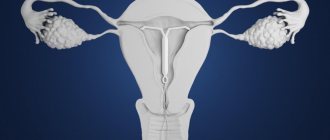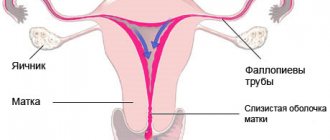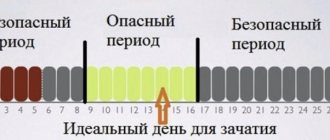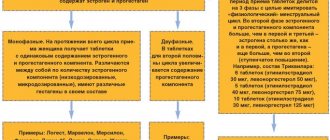Our expert
Marina Pozdeeva
City Dnepropetrovsk
First category pharmacist and pharmacy manager. Author of numerous works on pharmacology and pharmacotherapy
Almost 18% of all men and women who use contraceptives prefer hormonal methods [1]. They are quite effective - the probability of pregnancy ranges from 0.1% to 6–7%. A wide range of hormonal contraceptives allows you to choose a method of protection depending on the individual characteristics of the woman.
Where it all began
The path to the creation of hormonal contraceptives was long and thorny. The first attempts by scientists to find a relationship between the level of reproduction and the function of the corpus luteum began at the end of the 19th century. In 1921, Ludwig Haberlandt, a professor of physiology at the University of Innsbruck (Austria), transplanted the ovaries of a pregnant rabbit into a female rabbit and thereby demonstrated an example of hormonal contraception. It is Ludwig Haberlandt who is considered the father of the hormonal method of preventing unwanted pregnancy.
By 1930, scientists had determined the structure of steroid hormones, isolated them, and even discovered that high doses of androgens, estrogen and progesterone prevented ovulation. It took pharmacologists almost a quarter of a century to come up with the creation of the first hormonal contraceptive. It turned out to be a drug with two active ingredients norethinodrel + mestranol.
Interestingly, the drug was first approved as a treatment for menstrual disorders. Only three years later (in 1960) the American FDA gave the green light to the use of the drug as a contraceptive. And this was just the beginning of a long journey.
Hormonal contraceptives are divided into the following types:
COC: both treatment and prevention
The results of studies from 20 countries around the world showed that women currently taking COCs, as well as those who have taken them for the past 1-4 years, have a slightly increased risk of developing breast cancer. It is assumed that COCs may potentiate the underlying cause of breast cancer.
Under the capacious and even slightly ridiculous abbreviation COC, very serious drugs are hidden - combined oral contraceptives. They are radically different from their progenitor, which contained horse doses of hormones: 150 mcg of estrogen mestranol and 10 mg of the gestagen norethinodrel. Modern oral contraceptives contain 20–35 mcg of estrogen (most often in the form of ethinyl estradiol) and an extremely low dosage of gestagens.
By the way, about gestagens. In recent decades, scientists have been able to synthesize new progestins that have a pronounced therapeutic effect. Thanks to this, COCs have become full-fledged therapeutic drugs used both in monotherapy and as part of complex treatment of various diseases.
Thus, for acne, combination drugs are prescribed containing cyproterone acetate, drospirenone or desogestrel as a progestin. Women suffering from hirsutism are advised to use COCs with antiandrogenic properties - combinations of estrogen and cyproterone acetate or drospirenone.
All COCs significantly reduce the duration and severity of menstrual blood loss. Particularly effective in such cases are drugs containing estradiol valerate and dienogest. The real scourge of most women is premenstrual syndrome (PMS), which develops in 70–90% of cases [2]. The use of combined hormonal drugs can significantly reduce chest discomfort and pain, and combinations of drospirenone and ethinyl estradiol also improve the psycho-emotional state. It is this complex that is recognized as the most effective for correcting PMS symptoms [3].
Particular attention today is paid to the ability of COCs to reduce the risk of developing benign and malignant neoplasms in the pelvis. It has been proven that the use of modern combinations can reduce the likelihood of ovarian cancer by 40%, and endometrial cancer by 50% [4]. Moreover, the protective effect persists for 15 years after discontinuation of the drug.
Restrictions on the use of COCs
Unfortunately, even the lowest-dose combined contraceptives are not without side effects, which are most pronounced in the first months of use: nausea, breast tenderness, breakthrough bleeding, amenorrhea, headaches.
The use of combined contraceptives may increase the risk of thromboembolism. And if in potentially healthy women it is extremely low, then in the presence of at least one risk factor, the likelihood of thrombosis increases sharply. Therefore, COCs are prescribed with caution to women who smoke, as well as those suffering from venous insufficiency, obesity, and hypertension.
The use of COCs even after 35 years is associated with a certain risk. This is again associated with the ability of drugs to increase thrombotic readiness in women with impaired hemostasis, which is more likely to develop in older reproductive age. When several risk factors are combined, the use of COCs after 35 years is absolutely prohibited. For example, COCs are strictly contraindicated for women over 35 years of age who smoke.
Types of contraception
- Surgical contraception. The most radical method, which is complete sterilization with the inability to have children in the future. The law on this type of pregnancy protection has been in force in Russia since 1990, and allows voluntary sterilization from the age of 35, if a woman has at least two children (therefore, “ideological” child-free minors cannot use such a service)
- Intrauterine devices. Devices made of medical plastic and containing either non-inflammatory metals (silver, gold, copper) or impregnated with the hormone levonorgestrel, with its strong contraceptive effect
- Contraceptive implants. Capsules with the thinnest walls, which are sewn into the subcutaneous tissue and deliver substances that prevent conception into the blood for 3-5 years. A highly effective contraceptive that works in 999 cases out of a thousand.
- Vaginal rings. They are also a device with hormonal impregnation, only it needs to be changed once a month, and the woman does this on her own.
- Contraceptive patches. A transdermal contraceptive that exports hormonal contraceptives through the skin, with its high absorption capacity.
- Birth control pills. They are of general action, suitable for use by women from a very young age, who have only recently emerged from the pubertal period of physiological development, to mature women who are ready to enter menopause.
But still, the best choice would be contraceptives designed for a certain age. For forty-year-olds, this is a mini-pill.
Mini-pills: advantages and disadvantages
Compared to the variety of combined oral medications, mini-pills look rather faded. This group includes only a few drugs containing low doses of the progestins desogestrel or linestrenol.
The contraceptive effect of the mini-pill is greater due to the thickening of the cervical mucus and thereby reducing the viability of sperm, as well as reducing the likelihood of their penetration. In addition, progestin-only contraceptives containing moderate doses of hormones (such as desogestrel) suppress follicular development and prevent ovulation in 97–99% of cycles.
Due to the absence of estrogen, mini-pills are much better tolerated than COCs. They can be taken safely while breastfeeding. Mini-pills do not increase the risk of thromboembolism, including in women over 35 years of age. In addition, these drugs reduce menstrual blood loss and PMS symptoms. After discontinuation of gestagen contraceptives, fertility is restored very quickly.
But, despite their relative safety, mini-pills are taken by only 1% of women who prefer hormonal contraception. Such moderate popularity is due to the need to carefully monitor pill intake. They must be taken at the same time every day. Even if you deviate from the “course” for only three hours (the interval between doses is 27 hours), you should use an additional, non-hormonal contraceptive.
In addition, scientists have not yet found out whether mini-pills reduce the risk of developing ovarian cancer, like their colleagues in the COC industry, or not.
Admission rules
Let's consider the possibilities of taking these contraceptive drugs at different periods of a woman's life, as well as in the presence of certain diseases.
After childbirth
Many women are under the misconception that their fertility will be restored only a few months after the birth of the child, even if she does not breastfeed. Such ignorance and carelessness leads to rapid pregnancy when the body has not yet fully recovered.
In some cases, the ability to conceive is restored within three to four weeks after the birth of the child, so contraception should become the norm immediately after the spouses begin regular sexual activity.
Which contraception is more effective after childbirth, and which is safer during breastfeeding? About this in our previous article, follow the link.
If the child is completely bottle-fed, taking pills should begin immediately after birth, no later than three weeks. If breastfeeding, you can wait until the fifth or sixth week of the postpartum period. If it is necessary to supplement the child's feeding (breastfeeding is carried out partially), mini-pill contraception is required. You need to start taking contraceptives in the first month after delivery.
For nursing mothers, mini-pills are the best way to avoid unwanted pregnancy during a period when the body is under increased stress.
Taking the mini-pill while breastfeeding is absolutely safe for the baby. It does not have a negative effect on the baby’s development or weight gain. If a woman decides to become pregnant, her reproductive function will be restored immediately after stopping the drug. Doctors advise skipping 2-3 menstrual cycles before getting pregnant. During this period, you need to use other methods of contraception, for example, condoms.
After 45 years
At this age, there is a gradual decline in ovarian activity, which reduces the likelihood of pregnancy. However, this possibility cannot be completely ruled out. Taking a mini-pill during this period of a woman’s life will not only avoid unwanted pregnancy, but will also become a kind of prevention of the occurrence of ovarian cysts and mammary tumors.
Progestogens eliminate the first symptoms of menopause, such as increased sweating, hot flashes, the development of osteoporosis, and insomnia. If previously it was believed that hormonal contraceptives were undesirable after 30-35 years, now new generation drugs are allowed even at older ages.
Women should take into account that some medications, when taken simultaneously with birth control pills, may reduce the effectiveness of the latter. First of all, such medications include anticonvulsants and sleeping pills, some antibiotics, antifungal medications, and anti-HIV medications.
Although the likelihood of pregnancy when taking the mini-pill correctly is almost zero, it still exists. If pregnancy occurs, microdoses of progestin are immediately discontinued.
The use of mini-pills for certain pathologies
- For varicose veins
Until relatively recently, varicose veins and hormonal contraception were incompatible. Such drugs reduce the elasticity of the walls of blood vessels and retain fluid. This negative effect causes swelling in the legs, the formation of blood clots and the risk of blood clots.
Mini-pills are an excellent solution for women with varicose veins because they contain a small amount of hormones. Taking pills should only be done under the strict supervision of a doctor. In addition to consulting a gynecologist, recommendations from a phlebologist are necessary.
- For uterine fibroids
Fibroids are a benign tumor of the uterus caused by hormonal imbalances. When small in size, it does not cause discomfort and is not an indication for surgery. The tumor becomes dangerous and requires removal if it grows rapidly and is large in size. Taking hormonal contraceptives with this diagnosis is problematic, since third-party interference with hormonal levels can lead to disruptions and intensive tumor growth.
Mini-pills for fibroids can be prescribed to women under 40 years of age. In this case, the choice of remedy can only be made by a doctor. In case of complications with other contraindications, it is advisable to choose another method of contraception.
- For endometriosis
Endometriosis also belongs to hormonal-dependent diseases. Pathological proliferation of endometrial cells causes pain during menstruation, urination and bowel movements, and heavy discharge during menstruation.
For endometriosis, mini-pills can have a therapeutic effect. They are prescribed to women under 35 years of age, with the first and second severity of the disease. Contraindications for use are similar to general warnings: malignant tumors of the breast and genital organs, uterine bleeding, diabetes mellitus, epilepsy, severe pathologies of the liver and gall bladder.
- For mastopathy
Modern hormonal contraceptives are used not only for protection, but also for the treatment of diseases caused by hormonal imbalances in the body. For mastopathy, which belongs to this type of disease, hormonal drugs with sufficient amounts of estrogen and progesterone are prescribed. Mini-pills contain a small amount of components, so their effectiveness in treating the disease will be low.
COCs are not recommended for people suffering from high blood pressure.
- For hypertension
Since these drugs have a more gentle effect on the body, their use is quite acceptable after consultation with a doctor.
How do mini-pills affect basal temperature?
Prescribing hormonal contraceptives helps maintain hormone levels and basal temperature at approximately the same level. Minor fluctuations in the latter are allowed. But since ovulation is suppressed, there are no rises signaling the maturation of the egg.
After discontinuation of the drug, the basal temperature chart returns to normal almost immediately.
How to take contraceptives correctly?
The low probability of pregnancy (7%) when taking mini-pills should not frighten women. If you follow the instructions and time of administration, there is no reason to fear an unwanted pregnancy. In this case, you need to follow some rules:
- Choose the most appropriate time of day to take the pill. It is better if this is the time when the woman takes a shower and gets ready for bed. Daytime and morning hours are less suitable, since in the bustle of various activities you can forget about the pill. The time of administration should not be disrupted or rescheduled, since even a shift of several hours can significantly reduce the contraceptive effect.
- The tablets are taken daily until the package runs out.
- Reception from the next package should begin the very next day after the end of the previous one. You cannot take breaks between them.
- You can start the course on any day of the menstrual cycle. The first day of menstruation will be the most optimal; in this case, protection will become reliable the very next day. On other days of the cycle, protection is less reliable, so for the next two days you need to either avoid intimacy or use other means of contraception, such as condoms.
- After a miscarriage or abortion, the first pill should be taken within the first five days.
- If a woman forgets to take a pill at the appointed time, she should do so immediately after remembering her mistake. The remaining tablets should be taken as usual. There is no need to worry, the contraceptive effect will remain. However, regular omissions significantly reduce efficiency. If 2 or more tablets are missed during the menstrual cycle, additional contraception is required!
- Severe nausea, vomiting, and severe stool disorders indicate that mini-pills do not have an effective effect. You need to seek help from a doctor who will help you choose another, more effective drug.
- Mini-pills can change the pattern of menstruation. The discharge may become less abundant, and the cycle itself may become longer. Such changes are not a deviation from the norm and do not require treatment or discontinuation of the drug. If a woman decides to become pregnant, her menstrual cycle will resume within a short time after stopping the contraceptive.
Women should be wary if they experience prolonged heavy bleeding during menstruation, delayed menstruation, or severe pain in the pelvic area. The last two signs may indicate an ectopic pregnancy, when a fertilized egg implants in the fallopian tube. In this case, the only treatment option is urgent surgery.
Prolonged gestagens
Depot medroxyprogesterone acetate (DMPA) is a long-acting progestin that is very effective. The probability of pregnancy while using DMPA does not exceed 0.3%. The drug is administered intramuscularly once every three months.
DMPA can be used by women for whom estrogens are contraindicated, as well as by those who are breastfeeding. DMPA injections have been shown to help reduce symptoms of endometriosis, primary dysmenorrhea and ovulatory pain. In addition, the drug reduces the risk of endometrial cancer by 80% [5], and also reduces the likelihood of developing iron deficiency anemia, pelvic inflammatory disease and ectopic pregnancy.
Disadvantages of DMPA include menstrual irregularities, weight gain, and slow recovery of fertility after drug withdrawal.
Side effects
Before using this means of protection, you need to consult with a specialist so that he can help you choose which drug is better and tell you the instructions for use. If the medicine is selected by a competent doctor, then you should not be afraid of any side effects. The following adverse reactions are possible:
Increased body hair growth.- Edema.
- Ovarian cyst.
- Painful sensations in the mammary glands.
- Weakness and dizziness.
- Thrush.
- Sensitivity to ultraviolet radiation.
- Changes in the menstrual cycle.
Hormonal implants
The history of the world's first hormonal implant containing levonorgestrel began back in 1966. Then the American biochemist Sheldon Segala and the Chilean physiologist Horacio Croxatto invented a radically new method of contraception using subcutaneous implants that regularly release a dose of gestagen. Clinical trials conducted in 1974 in Chile proved the effectiveness of levonorgestrel implanted subcutaneously. However, due to delays with documents, this drug appeared on the market only after almost two decades. Today, the pioneer, wise with experience and years of experience, has given way to a more modern implant containing etonogestrel as an active substance.
The effectiveness of hormonal implants is very high and ranges between 98.9 and 99.8%. Implants act in the same way as mini-pills, but unlike them they do not require constant concentration. The drug is administered subcutaneously in the area of the inner shoulder of the non-dominant arm and left alone for three years. All this time, the woman’s body receives daily low doses of gestagen, which provides a contraceptive effect.
Just like mini-pills, implants are approved for use in breastfeeding women. Their biggest drawback is considered to be difficulty in insertion and removal, but for qualified medical personnel they can be overcome.
General characteristics: composition, description
Mini-pills contain a small dose of a synthetic analogue of progesterone - progestin (about 150-500 mg). They are an excellent replacement for combined oral contraceptives. The tablets have a gentle effect on the female body and have a small number of contraindications, but their contraceptive effect is somewhat lower compared to COCs.
Vaginal rings and patches
The modern dosage form, a vaginal ring containing a combination of estrogen and progesterone, first appeared in 2001. The ring releases enough hormones every day for three weeks to suppress ovulation. A potential difference between the drug and COCs is the lower dosage of ethinyl estradiol due to absorption through the vaginal mucosa.
The vaginal ring is easy to install and just as easy to remove, but there is a possibility of it accidentally slipping out, for example, during sexual intercourse. The obvious advantages of contraceptive rings include the low likelihood of developing dyspeptic side effects (nausea and vomiting) due to the fact that the active substance is absorbed through the vaginal mucosa, bypassing the gastrointestinal tract.
The transdermal therapeutic system (patch) appeared in pharmacies at the same time as the rings. Dosages of estrogen and progestogen are comparable to doses of COCs. The mechanism of action, effectiveness, advantages and disadvantages of the patch are the same as those of combined oral medications.
IUD: intrauterine therapy system
The hormonal intrauterine system is unanimously recognized as one of the most effective and safe means of hormonal contraception. Its action is based on the regular release of the progestin levonorgestrel. The Pearl index (the number of pregnancies that occurred during the year when using the drug) is 0–0.2. Duration of validity - up to 5 years. In addition to the contraceptive effect, the hormonal IUD significantly reduces menstrual blood loss (by 75%), so it is used as a treatment for menorrhagia.
List of drugs
Below is a list with the names of several effective drugs:
- Micronor;
- Primolut-Nor;
- Norethisterone;
- Continuin;
- Levonorgestrel;
- Ovret;
- Lactinet;
- Charosetta;
- Linestrenol;
- Orgametril;
- Exluton.
New generation contraceptives can have a big difference in price depending on the manufacturer and the number of tablets in the package. The cost varies greatly from 250 to 1200 rubles.
Task for a pharmacist
All hormonal contraceptives are prescription drugs. They should be prescribed exclusively by a doctor. However, it cannot be said that the role of the pharmacist is limited to reading the prescription and dispensing the drug.
The range of modern hormonal contraceptives, especially oral contraceptives, is very large. Among them there are many generics, and the trend in recent years to increase their range will apparently continue in the future. A pharmacist, looking with a professional eye at a shelf with hormonal contraceptives, must be able to quickly and correctly select the drug according to the international name written in the prescription. Moreover, select according to the financial capabilities of the buyer.
That’s why it’s so important not to get lost in the tricky names of estrogens and gestagens and the equally tricky dosages of hormones. And knowledge about the difficult world of hormonal contraception is a tool in the fight for both the client and the quality of his service.









